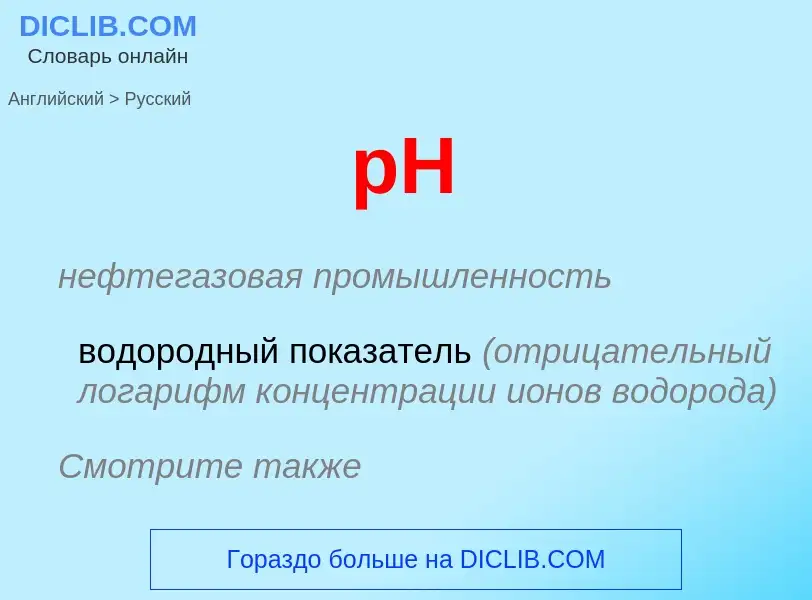Translation and analysis of words by ChatGPT artificial intelligence
On this page you can get a detailed analysis of a word or phrase, produced by the best artificial intelligence technology to date:
- how the word is used
- frequency of use
- it is used more often in oral or written speech
- word translation options
- usage examples (several phrases with translation)
- etymology
PH - translation to English
нефтегазовая промышленность
водородный показатель (отрицательный логарифм концентрации ионов водорода)
Смотрите также
Wikipedia

In chemistry, pH (), also referred to as acidity, historically denotes "potential of hydrogen" (or "power of hydrogen"). It is a scale used to specify the acidity or basicity of an aqueous solution. Acidic solutions (solutions with higher concentrations of hydrogen (H+) ions) are measured to have lower pH values than basic or alkaline solutions.
The pH scale is logarithmic and inversely indicates the activity of hydrogen ions ( in the solution.
where [H+] is the equilibrium molar concentration (mol/L) of H+ in the solution. At 25 °C (77°F), solutions with a pH less than 7 are acidic, and solutions with a pH greater than 7 are basic. Solutions with a pH of 7 at 25 °C are neutral (i.e. have the same concentration of H+ ions as OH− ions, i.e. the same as pure water). The neutral value of the pH depends on the temperature and is lower than 7 if the temperature increases above 25 °C. The pH value can be less than 0 for very concentrated strong acids or greater than 14 for very concentrated strong bases.
The pH scale is traceable to a set of standard solutions whose pH is established by international agreement. Primary pH standard values are determined using a concentration cell with transference by measuring the potential difference between a hydrogen electrode and a standard electrode such as the silver chloride electrode. The pH of aqueous solutions can be measured with a glass electrode and a pH meter or a color-changing indicator. Measurements of pH are important in chemistry, agronomy, medicine, water treatment, and many other applications.


